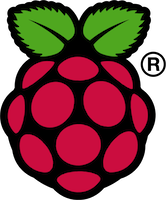We've launched our new site at www.openlighting.org. This wiki will remain and be updated with more technical information.
Difference between revisions of "Responder Testing with the Raspberry Pi"
From wiki.openlighting.org
(→Running the Tests) |
|||
| (12 intermediate revisions by the same user not shown) | |||
| Line 1: | Line 1: | ||
[[Image:Raspi_Colour_R.png|right]] | [[Image:Raspi_Colour_R.png|right]] | ||
| − | This tutorial describes how to run the [[RDM_Responder_Testing| RDM Responder Tests]] on the [http://www.raspberrypi.org/ Raspberry Pi] | + | This tutorial describes how to run the [[RDM_Responder_Testing| RDM Responder Tests]] on the [http://www.raspberrypi.org/ Raspberry Pi]. |
== Required Hardware == | == Required Hardware == | ||
| − | Along with the hardware in the [[OLA_Raspberry_Pi#Getting_Started | Getting Started]] section, you'll need one of the USB RDM controllers listed | + | Along with the hardware in the [[OLA_Raspberry_Pi#Getting_Started | Getting Started]] section, you'll need one of the USB RDM controllers listed on the [[RDM Responder Testing]] page. It's recommended that you attach the controller through a powered USB hub. |
== Installation == | == Installation == | ||
| − | Follow the method described at the [[OLA_Raspberry_Pi| OLA on Raspberry Pi]] page. It's | + | Follow the method described at the [[OLA_Raspberry_Pi| OLA on Raspberry Pi]] page. It's recommended that you use the ''Binary Packages Image'', unless you have a good reason for doing otherwise. |
| + | |||
| + | == RDM Hardware Setup == | ||
| + | |||
| + | |||
| + | At this point you can connect your RDM responder to RDM controller and connect the controller to the PI (again using a powered USB hub is strongly recommended). If you're using [[DMXter4 RDM]] or [[MiniDMXter]] you need to put the DMXter into dongle mode before powering on the Pi. From the RDM menu on the DMXter, hold the left and right buttons and then hit the center button. The display should change to "USB Dongle Mode". | ||
== Configuration == | == Configuration == | ||
| Line 16: | Line 21: | ||
<pre> | <pre> | ||
| − | dpkg-reconfigure ola-rdm-tests | + | sudo dpkg-reconfigure ola-rdm-tests |
</pre> | </pre> | ||
| Line 26: | Line 31: | ||
and get back to the command prompt. | and get back to the command prompt. | ||
| + | |||
| + | == Patching a Device == | ||
| + | |||
| + | You need to patch your USB RDM controller to a universe. Connect to the OLAD web console at http://192.168.1.200:9090 (replace 192.168.1.200 with the IP Address of your device). Click on 'Add New Universe' and select the device you want to use for RDM testing. | ||
| + | |||
| + | Once the USB device is patched, you're ready to start running the tests. | ||
== Running the Tests == | == Running the Tests == | ||
| − | Everything is setup at this stage. You can connect to the | + | Everything is setup at this stage. You can connect to the RDM Responder Test UI on your device by opening a web browser and typing http://192.168.1.200:9099 (replace 192.168.1.200 with the IP Address of your device and note the port number change to 9099). The guide to the [[Using_the_RDM_Test_UI | RDM Responder Test UI]] explains how to run the tests. Alternatively you can run the tests from [[Running_the_tests|the command line]]. |
| − | |||
| − | The RDM Responder | ||
Latest revision as of 10:52, 24 February 2013
This tutorial describes how to run the RDM Responder Tests on the Raspberry Pi.
Contents
Required Hardware
Along with the hardware in the Getting Started section, you'll need one of the USB RDM controllers listed on the RDM Responder Testing page. It's recommended that you attach the controller through a powered USB hub.
Installation
Follow the method described at the OLA on Raspberry Pi page. It's recommended that you use the Binary Packages Image, unless you have a good reason for doing otherwise.
RDM Hardware Setup
At this point you can connect your RDM responder to RDM controller and connect the controller to the PI (again using a powered USB hub is strongly recommended). If you're using DMXter4 RDM or MiniDMXter you need to put the DMXter into dongle mode before powering on the Pi. From the RDM menu on the DMXter, hold the left and right buttons and then hit the center button. The display should change to "USB Dongle Mode".
Configuration
Once all the steps on the above page have been completed, there is one more step to enable the tests. SSH to the Pi device and run:
sudo dpkg-reconfigure ola-rdm-tests
When prompted if you want to start the RDM Responder tests at boot, select Yes. You should then see:
[ ok ] Starting OLA RDM Test Server: rdm_test_server.py.
and get back to the command prompt.
Patching a Device
You need to patch your USB RDM controller to a universe. Connect to the OLAD web console at http://192.168.1.200:9090 (replace 192.168.1.200 with the IP Address of your device). Click on 'Add New Universe' and select the device you want to use for RDM testing.
Once the USB device is patched, you're ready to start running the tests.
Running the Tests
Everything is setup at this stage. You can connect to the RDM Responder Test UI on your device by opening a web browser and typing http://192.168.1.200:9099 (replace 192.168.1.200 with the IP Address of your device and note the port number change to 9099). The guide to the RDM Responder Test UI explains how to run the tests. Alternatively you can run the tests from the command line.
